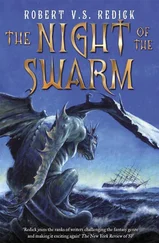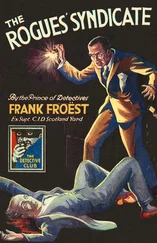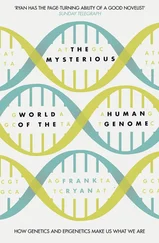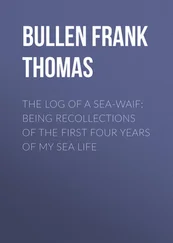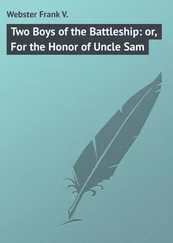Pfiesteria piscicida was a vampire.
He'd read a lot about it. Scientists' acquaintance with it was relatively new. It had started in the 1980s with the death of fifty fish in a laboratory at North Carolina State University. At first there was no apparent problem with the water in which they were swimming: the aquarium was swarming with tiny unicellular organisms, but that was nothing new. So the water was changed and new fish brought in. They didn't last a day. Something was exterminating them with incredible efficiency. It killed goldfish, striped bass and Nile tilapia in hours, sometimes minutes. Time and again the researchers watched as the fish twitched, then died an agonising death. Again and again the mysterious micro-organisms appeared out of nowhere, then vanished just as fast.
Slowly they pieced things together. A botanist identified the sinister organism as a new species of dinoflagellate. Numerous types had been categorised, some of which were harmless, but others had been exposed as living sacs of poison. They were known to have contaminated mussel farms, and certain species were responsible for the feared 'red tides' that turned the water red or brown. Shellfish were affected too. But these dinoflagellates were nothing compared to the newly discovered organisms.
Pfiesteria piscicida was different from other members of its order. It actively attacked. In some ways it resembled a tick – not for its appearance, but for its extraordinary patience. It lurked in the sediment of riverbeds or seas, seemingly lifeless. Each individual was encased in a protective cyst, and survived for years without food. All it took was a shower of secretions from a passing shoal of fish to trigger its appetite.
A lightning attack ensued. The algae cast aside their cysts, rising through the water in billions. Each cell was driven by a pair of flagella, one of which rotated like a propeller while the other steered. As they settled on a fish, the cells released their toxins, paralysing the creature's nervous system and burning coinsized holes in its skin. The peduncles shot into the wounds and sucked the lifeblood from the victim. Then they sank back to the seabed and retreated into their casing.
By and large, toxic algae were seen as normal, like poisonous toadstools in a wood. People had known of the phenomenon since Biblical times. Exodus contained a description that seemed to fit perfectly with the red tides: 'And all the water in the Nile turned into blood. And the fish in the Nile died, and the Nile stank, so that the Egyptians could not drink water from the Nile…' For a fish to be killed by a single-cell organism was clearly nothing new. But the method and the degree of brutality were. It seemed as though the planet's water had been seized by a terrible sickness and, for the moment, the most spectacular symptoms bore the name Pfiesteria piscicida . Toxins were killing marine life, coral was succumbing to new forms of disease, and beds of algae had become infected. But all of this was merely a reflection of the true state of the seas, which were suffering the consequences of overfishing, chemical dumping, the urbanisation of coastal regions, and global warming. No one could agree on whether the invasion of killer algae was a new development or a periodic occurrence, but there was no doubt that it was spreading across the globe to an unprecedented extent and that Nature had once again demonstrated her infinite creativity in producing new species. In Europe people congratulated themselves that Pfiesteria had not yet reached their shores, but thousands of fish were dying off the coast of Norway, and the Norwegian salmon farmers were facing financial ruin. This time the killer organism was Chrysochromulina polylepis , a kind of baby brother to Pfiesteria . No one dared speculate what might come next.
And now Pfiesteria piscicida was attacking Brittany lobsters.
But was it really Pfiesteria piscicida ?
Roche was plagued by doubt. The organism was far more aggressive than he'd expected. The real puzzle, though, was how the lobsters had survived. Had the algae come from inside them? Was it mixed with the jelly-like substance? The jelly had decomposed on contact with air; he was sure it was a distinct phenomenon, something new. But had the algae and the jelly both been hidden in the lobster? And, if so, what had happened to its flesh?
Was it really a lobster at all?
Roche was stumped. But of one thing he was certain: the substance, whatever it might be, had entered Roanne's drinking water.
Continental Margin, Norwegian Sea
At sea the world was just water and sky, with little to tell them apart. There were no visual markers, which meant that on clear days, the sense of infinity could suck you into space, and when it was wet, you never knew if you were on the surface or somewhere beneath it. Even hardened sailors found the monotony of constant rain depressing. The horizon dimmed as dark waves merged with banks of thick grey cloud, robbing the universe of light, shape and hope in a vision of desolation.
At least in the North Sea and the Norwegian Sea, the numerous oil platforms provided landmarks, although from the edge of the continental shelf, where the Sonne had been sailing for the past two days, most were too distant to see. Now even the few rigs in view were shrouded in drizzle. The vessel and everyone on it was soaked. A clammy cold crept under their waterproof jackets and overalls. Plump raindrops would have been preferable to the never-ending trickle of water, which seemed to rise off the sea as well as fall from the sky. It was one of the most unpleasant days that Johanson could remember. He pulled his hood down over his head and made for the stern, where the technicians were raising a CTD probe. Bohrmann caught up with him half-way there.
'Seeing worms in your sleep yet?' asked Johanson.
'Not quite' said the marine geologist. 'What about you?'
'Oh, I'm pretending I'm in a film. It's kind of reassuring.'
'Good idea. Who's directing?'
'Hitchcock.'
'The deep-sea version of The Birds .' Bohrmann smiled wryly. 'Sounds intriguing… Ah, here we go!'
He hurried towards the stern. A circular cage of rods rose over the side of the boat, hanging from the arm of a crane. Its top half was covered with an array of PVC bottles, containing samples of water from varying depths. Johanson watched as the probe was hauled on board and the bottles removed. Then Stone, Hvistendahl and Lund appeared. Stone hurried over to him. 'What's Bohrmann saying?' he asked.
'Not much.'
Stone's belligerence had given way to dejection. The Sonne had been following the continental slope south-west to a point above the tip of Scotland, taking readings from the water, while a sledge-mounted video system filmed from below. It was a bulky piece of equipment, like a steel shelf packed with gadgets, that was towed along the seabed. It was equipped with sensors, a floodlight and an electronic eye that took pictures and sent them via optical cable to the control lab on board.
The Thorvaldson's footage came courtesy of the more up-to-date Victor. The Norwegian research vessel was following the slope in a north-easterly direction towards Tromso, taking readings from the Norwegian Sea. Both vessels had set out from the site where the unit was to be built and were now on course to meet. Two days remained until their rendezvous, by which time they would have navigated the slope from Norway to the North Sea and recharted it from scratch. It had been Bohrmann and Skaugen's decision to survey the area as though they were exploring new territory – which, as it turned out, was what the waters had become. Since Bohrmann had announced the first findings, nothing seemed certain any more.
Читать дальше


